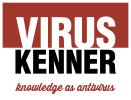Every human being is at risk for infectious diseases. However, some are at higher risk to get sick from an infection. The current coronavirus pandemic shows how people with underlying diseases, healthcare workers but also travellers to areas with a higher prevalence are at higher risk to get infected with this virus. This is not only the case for SARS-CoV-2, but also for many other virus infections. Laura Doornekamp studied how virus infections can be prevented in three important risk groups, namely immunocompromised patients, healthcare workers and travellers. From a national study among travellers was concluded that travellers have suboptimal protection for hepatitis A and measles, with children being at increased risk compared to adult travellers. In studies performed among (future) healthcare workers was shown that a hepatitis B vaccination series provides (long-term) protection in medicine students and booster vaccinations may be unnecessary and that laboratory workers who work with rabies virus could be followed up with dry blood spot sampling instead of venepuncture. Immunocompromised patients are at risk for more severe infections, however, it is often questioned if they will respond well to vaccines due to the compromised state of their immune system. In one of the studies described Doornekamp and colleagues showed that the immune response of Crohn’s disease patients with a fairly new therapy (ustekinumab) to seasonal influenza vaccination was comparable to those of healthy controls. Finally, the researchers looked into factors that may contribute to protection of vulnerable patients. They concluded that education plays an important role and vaccination recommendations of their practitioners are very influential. Social norms also have a large effect on vaccination uptake in other risk groups. Vaccination coverage is more affected by attitudes and perceived risks and benefits of vaccines than by knowledge about the vaccine and the disease it should prevent. In conclusion, Doornekamp’s thesis contributes to awareness of suboptimal protection of risk groups and offers insight and innovative opportunities to improve this.

